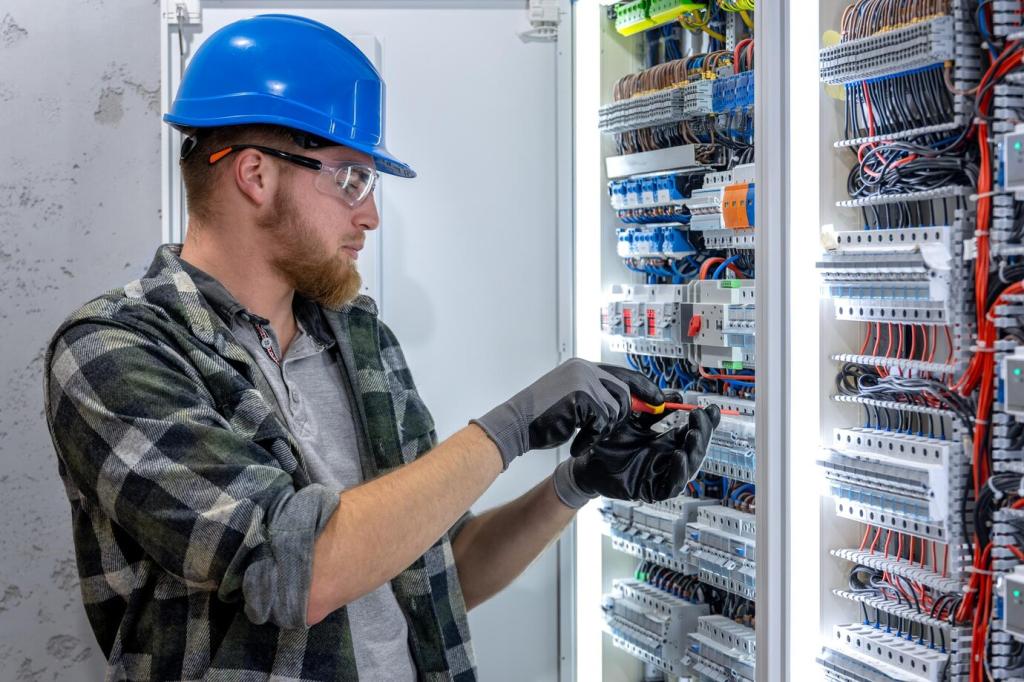Powering Tomorrow: Advancements in Smart Grid Communication Protocols
Chosen theme: Advancements in Smart Grid Communication Protocols. Welcome to a friendly deep dive into the new language of electricity—where substations, meters, inverters, and vehicles learn to listen, respond, and collaborate. Join the conversation, subscribe for field stories, and help shape a more resilient, intelligent grid.

The New Language of the Grid: Protocols Evolving in Sync

Utilities are blending IEC 61850, DNP3, and Modbus through profile-driven gateways that preserve semantics, timestamps, and event priorities. Careful mapping avoids brittle translations, allowing devices to exchange meaning, not just data. What bridges are you trusting in production today?
Determinism and Time: TSN, PTP, and Phasors at Scale
Using IEEE 802.1Qbv time-aware shaping, engineers schedule GOOSE and Sampled Values to guarantee bounded latency even during bursts. Deterministic queues prevent protection messages from competing with bulk telemetry. Has TSN simplified your VLAN spaghetti or added new design guardrails?

Security by Design: Protecting Protocols Without Paralyzing Them
Secure GOOSE, TLS-secured MMS, and role-based access keep critical messages confidential and accountable. Certificate lifecycle automation prevents outages triggered by expired credentials. What’s your renewal strategy when thousands of devices share sunrise certificate expiry dates?

Security by Design: Protecting Protocols Without Paralyzing Them
Micro-segmentation, software-defined perimeters, and device identity make lateral movement painfully hard. Combine allow-listing with behavior analytics to catch noisy and quiet attacks alike. Are you mapping protocol functions to granular policy instead of opening whole ports forever?

Preprocessing Phasors at the Edge
Edge nodes compress, denoise, and flag anomalies in PMU data, forwarding only actionable segments to the control center. This preserves fidelity while trimming bandwidth. What features do you compute on-site to keep backhaul calm during storms?

5G URLLC and Network Slicing for Priority Traffic
Grid operators map protection, DER dispatch, and AMI reads to different slices with explicit QoS. Protocol markings guide schedulers to honor latency promises. How are you validating that radio conditions still respect those assurances under peak load?

Rural Resilience with LTE-M Store-and-Forward
In a wind-lashed valley, LTE-M endpoints buffered telemetry and commands until coverage recovered, replaying events with signed timestamps. Operators reviewed exactly what happened, in order. Share your most effective offline-first strategy for remote circuits.
DER and EV Integration: Speaking IEEE 2030.5, OCPP, and OpenADR
With IEEE 2030.5/SEP 2.0, utilities can publish volt-var, frequency-watt, and ride-through curves that inverters actually follow. Feedback loops confirm compliance. What telemetry do you require before trusting autonomous inverter behavior on critical feeders?
DER and EV Integration: Speaking IEEE 2030.5, OCPP, and OpenADR
Events mapped to device capabilities—rather than generic shed percentages—earn better participation. Payloads carry intent, ramp rates, and comfort bounds so automations feel respectful. Which signals turned your customers from reluctant to enthusiastic demand response partners?


Data Models and Digital Twins: Making Meaning Portable
CIM ↔ IEC 61850 Mapping Without the Headache
Establish a canonical glossary and machine-readable mappings so device data from 61850 slots neatly into enterprise CIM. Avoid silent semantic drift by validating against test profiles. What toolchain keeps your mappings transparent and reviewable?


Versioning, Registries, and Backward Compatibility
Schema registries track evolution, while adapters downgrade gracefully for older devices. Feature flags signal capabilities without guesswork. Share how you de-risk upgrades when one substation stays at yesterday’s firmware for six more months.

Testing and Certification: From Lab Profiles to Real-World Wins
Cross-vendor events uncover assumptions hiding in profiles and edge cases nobody documented. Walking away with a shared test report prevents regressions. What’s the most surprising behavior you discovered only when two vendors finally spoke directly?
Testing and Certification: From Lab Profiles to Real-World Wins
Containerized labs replay months of traffic to evaluate firmware changes safely. Packet captures become living documentation tied to requirements. How do you keep test datasets representative without exposing sensitive system details to your vendors?


